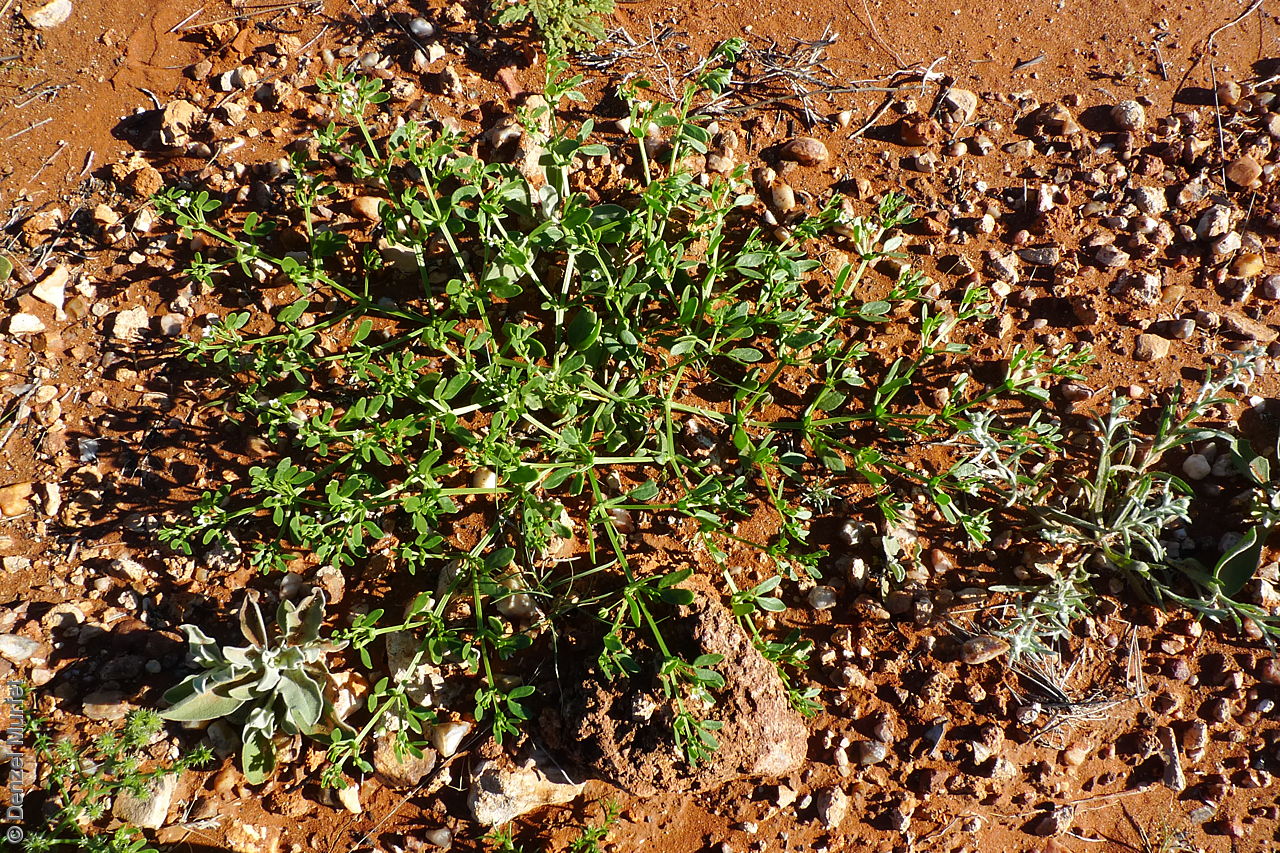
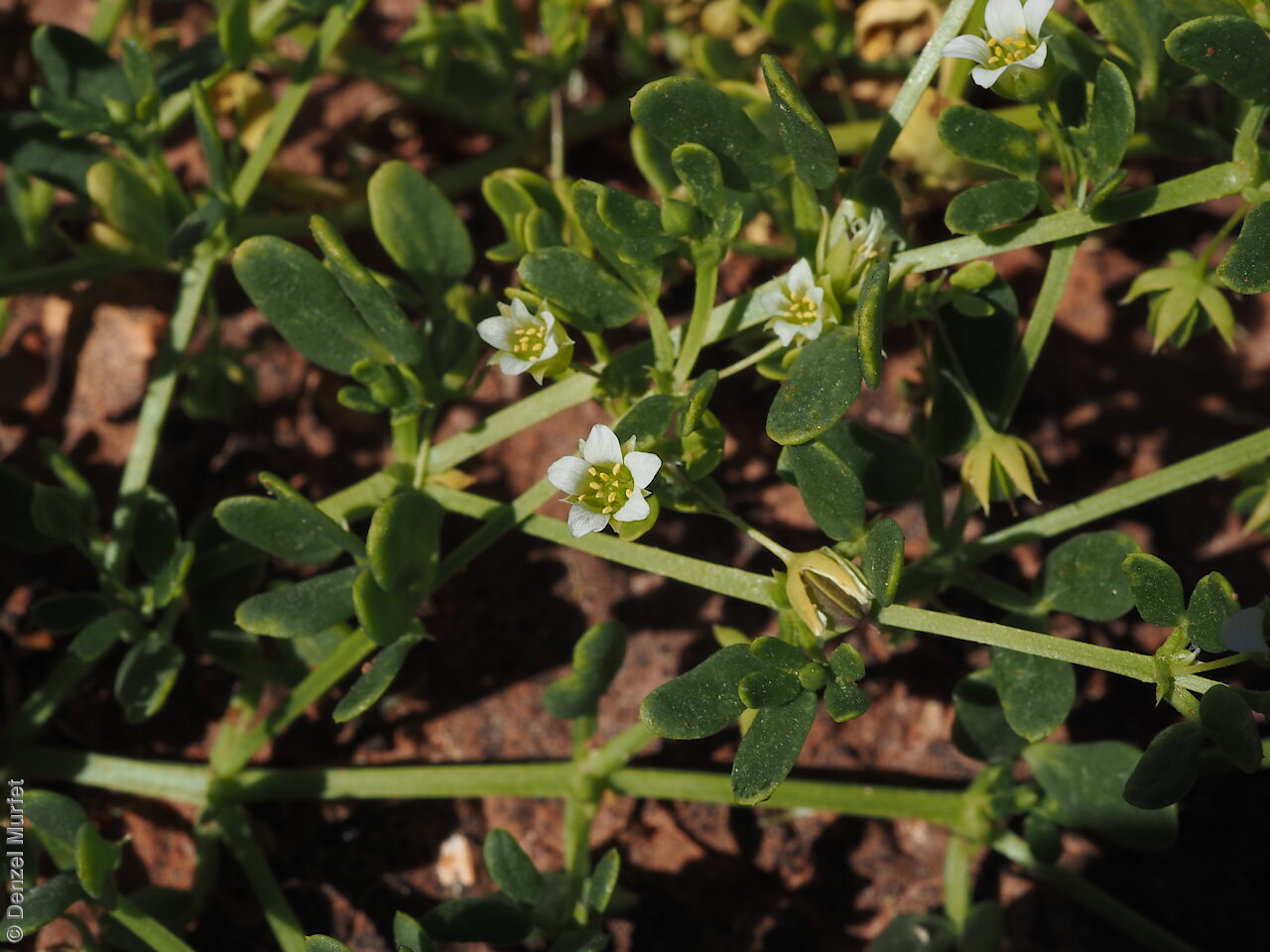
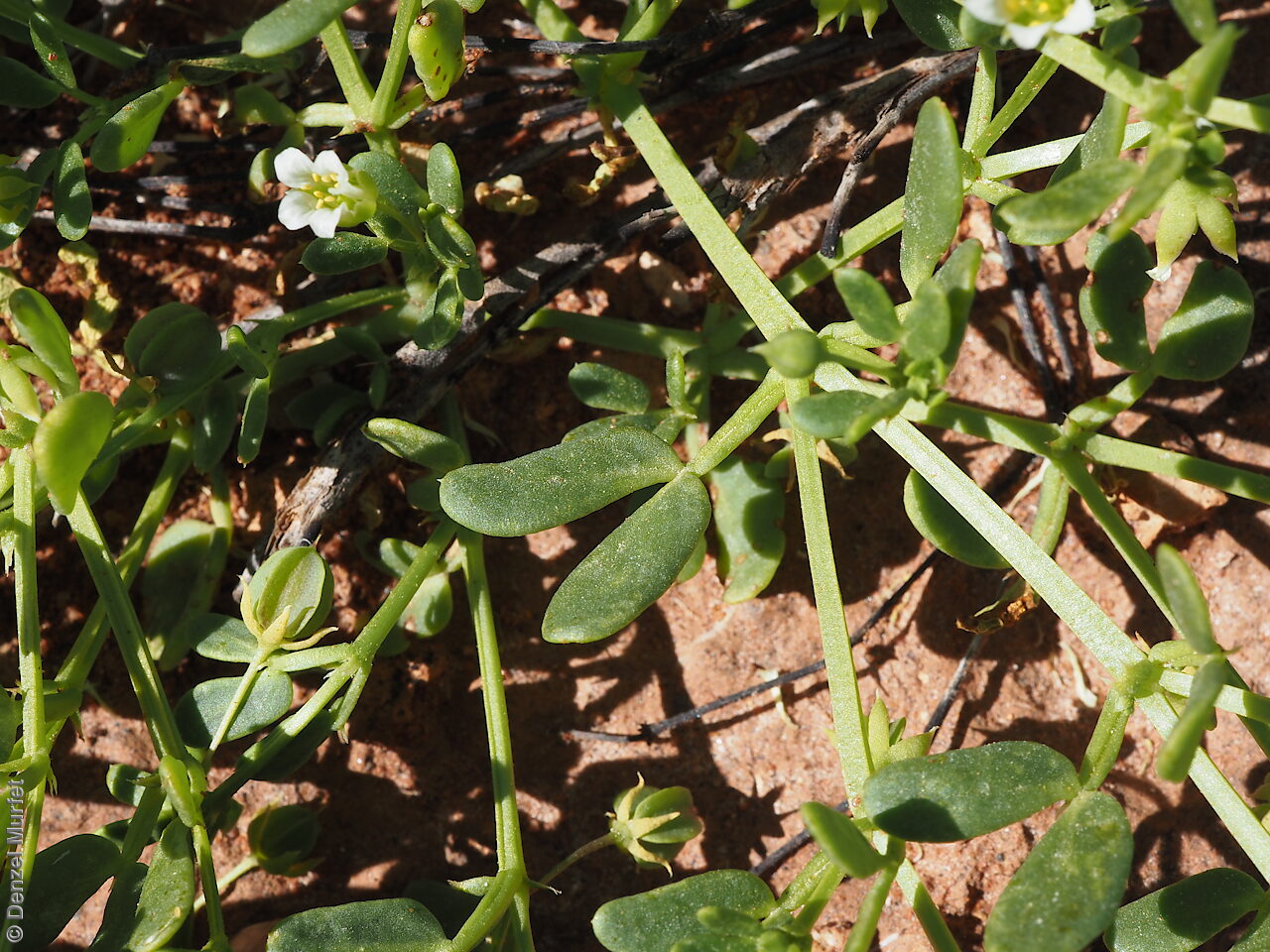
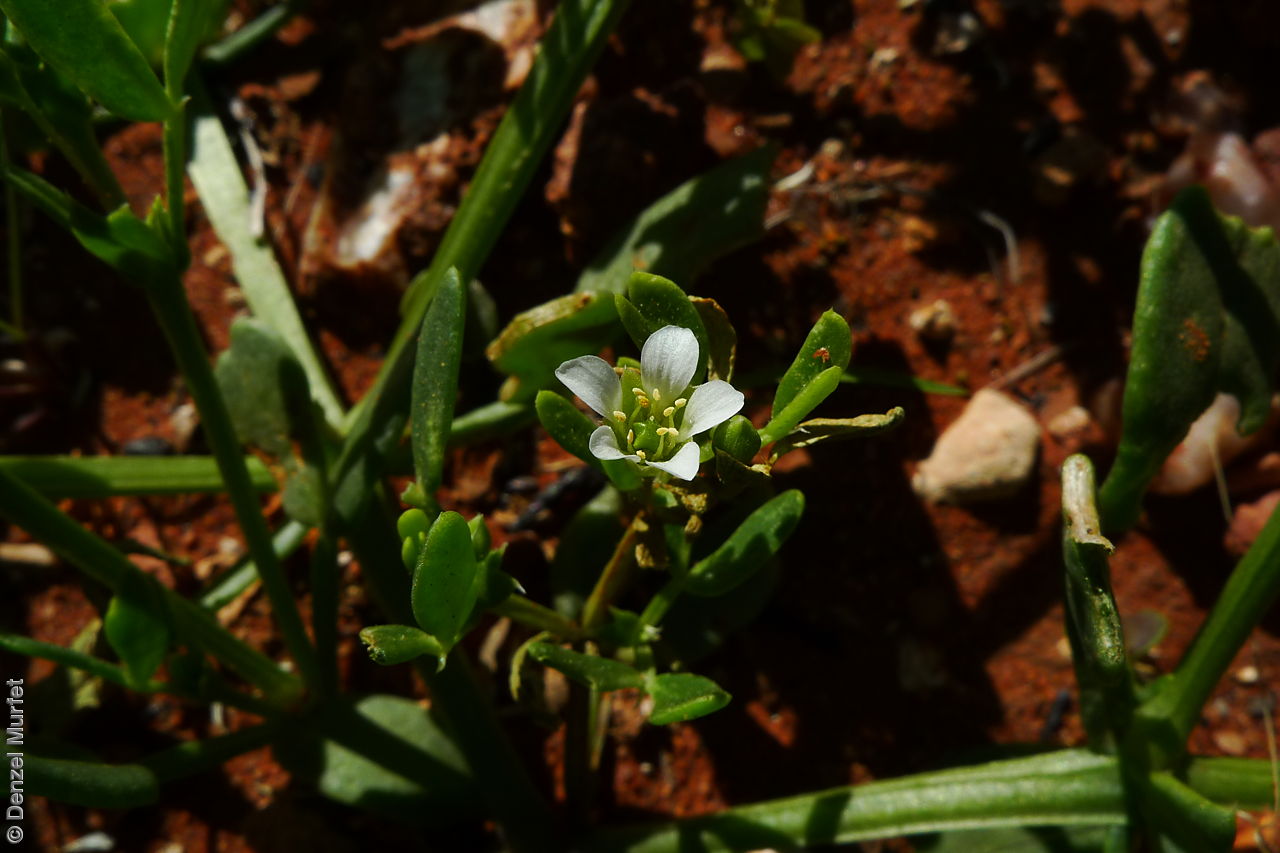
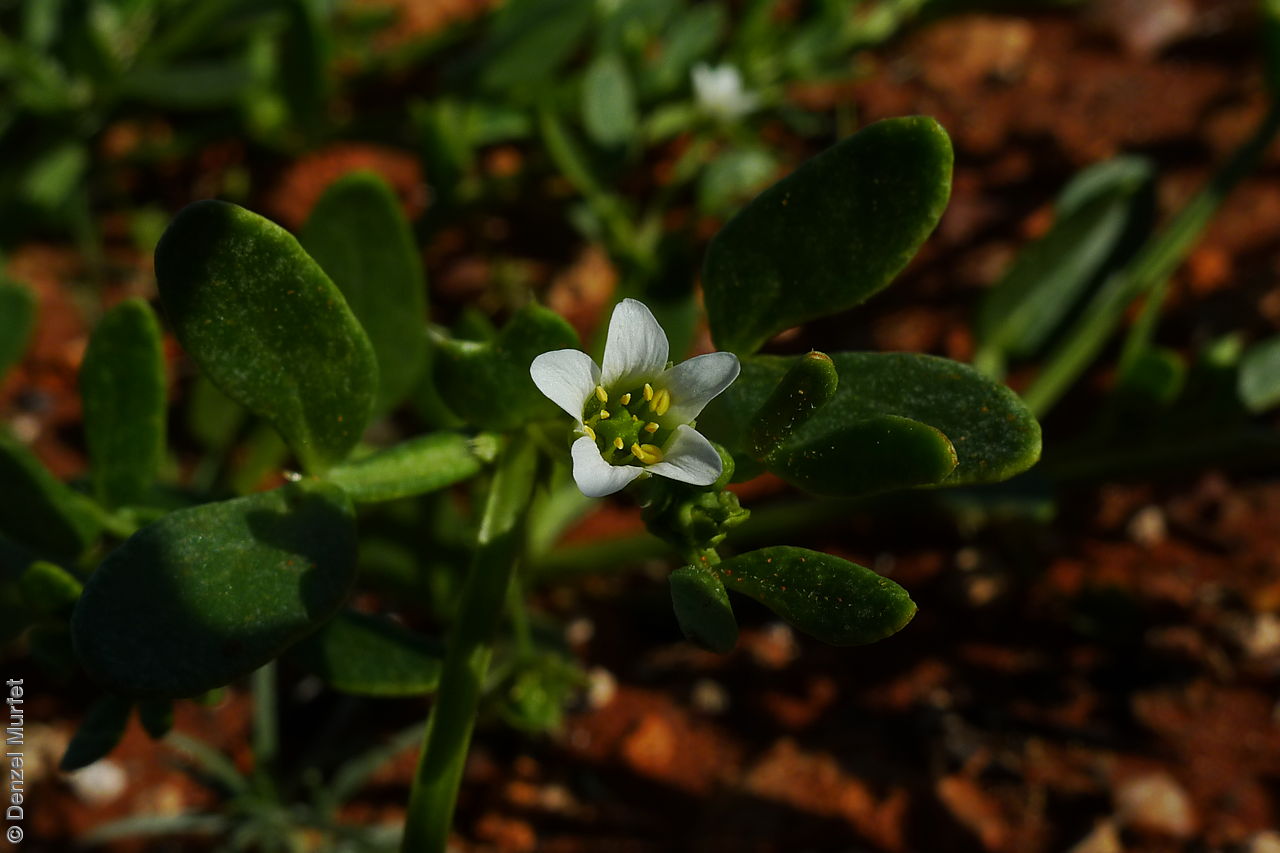
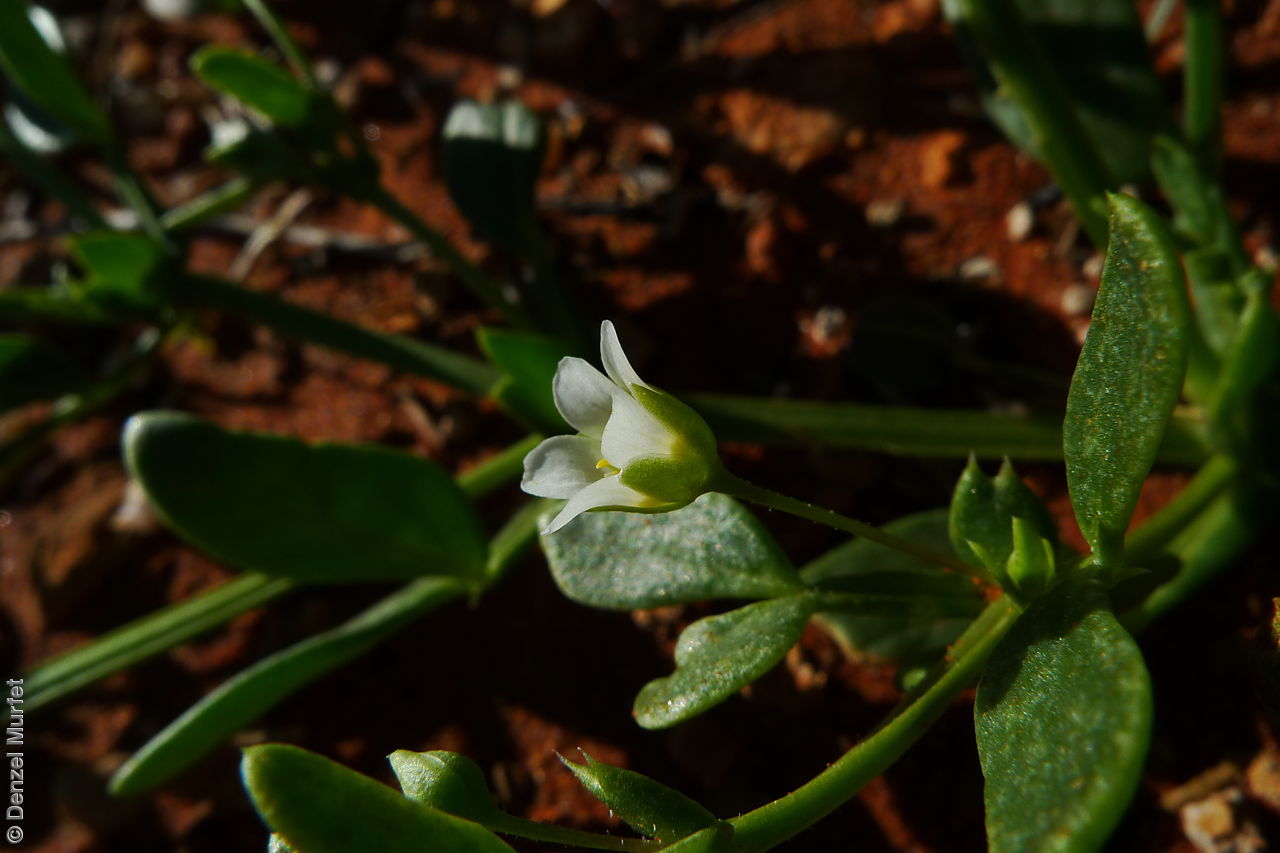
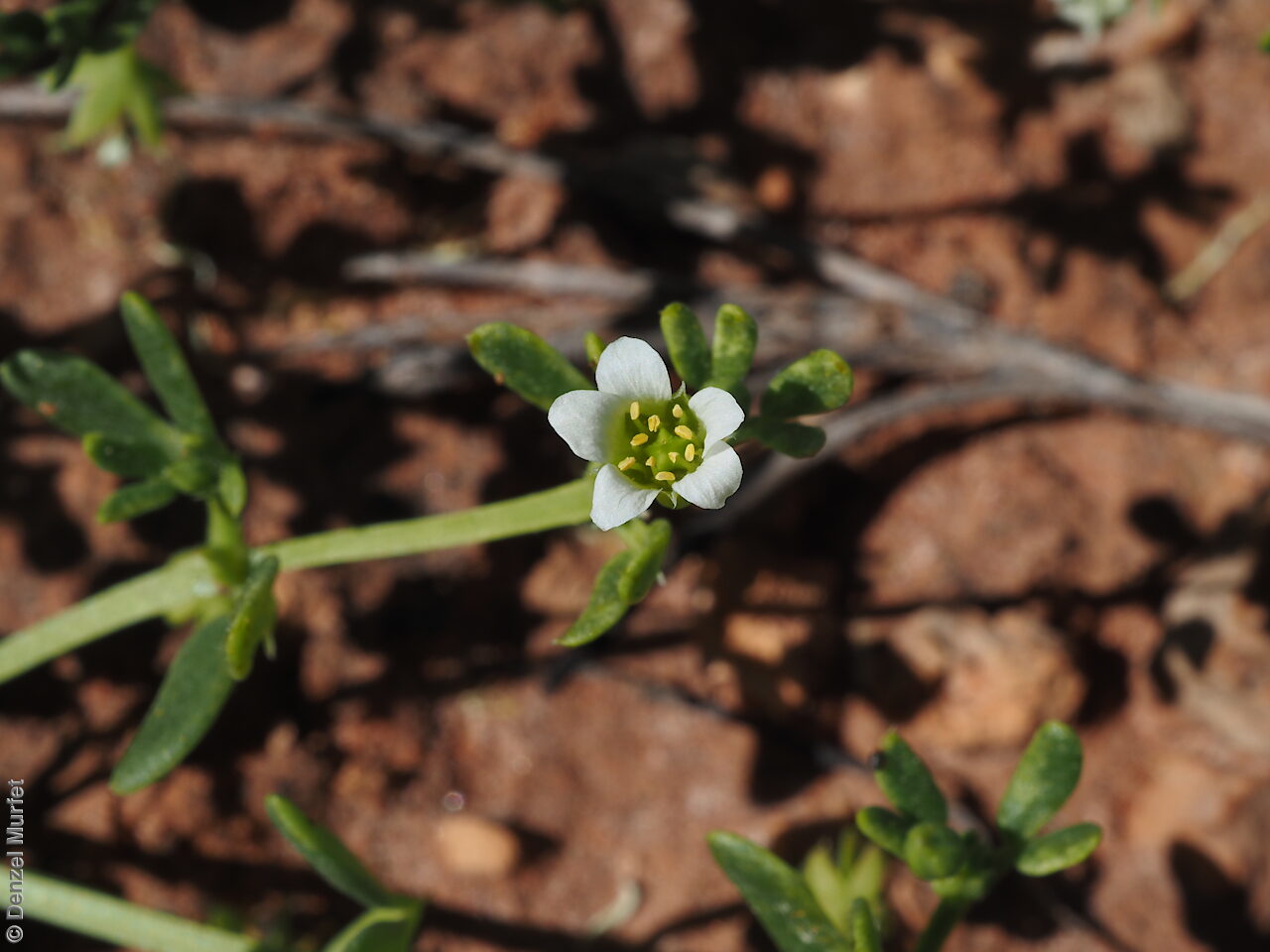
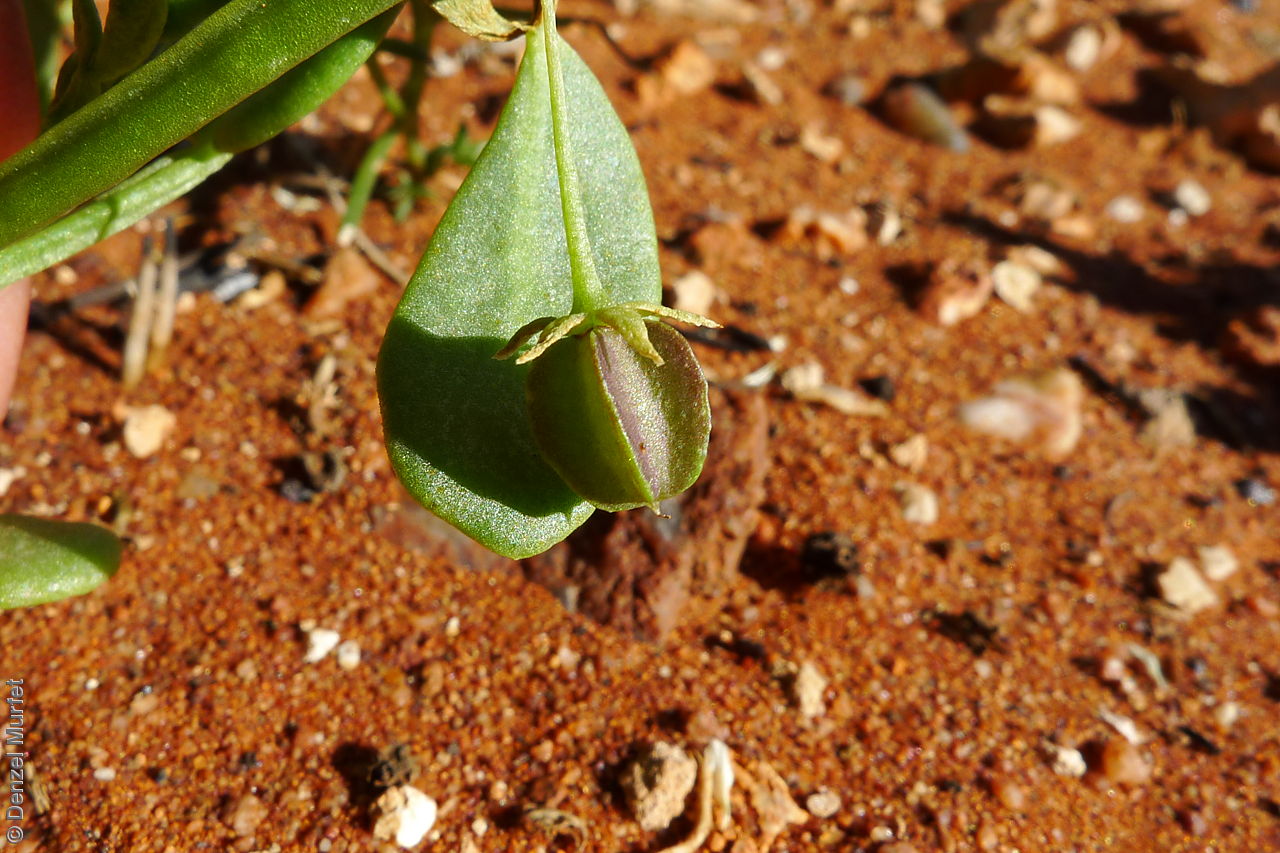
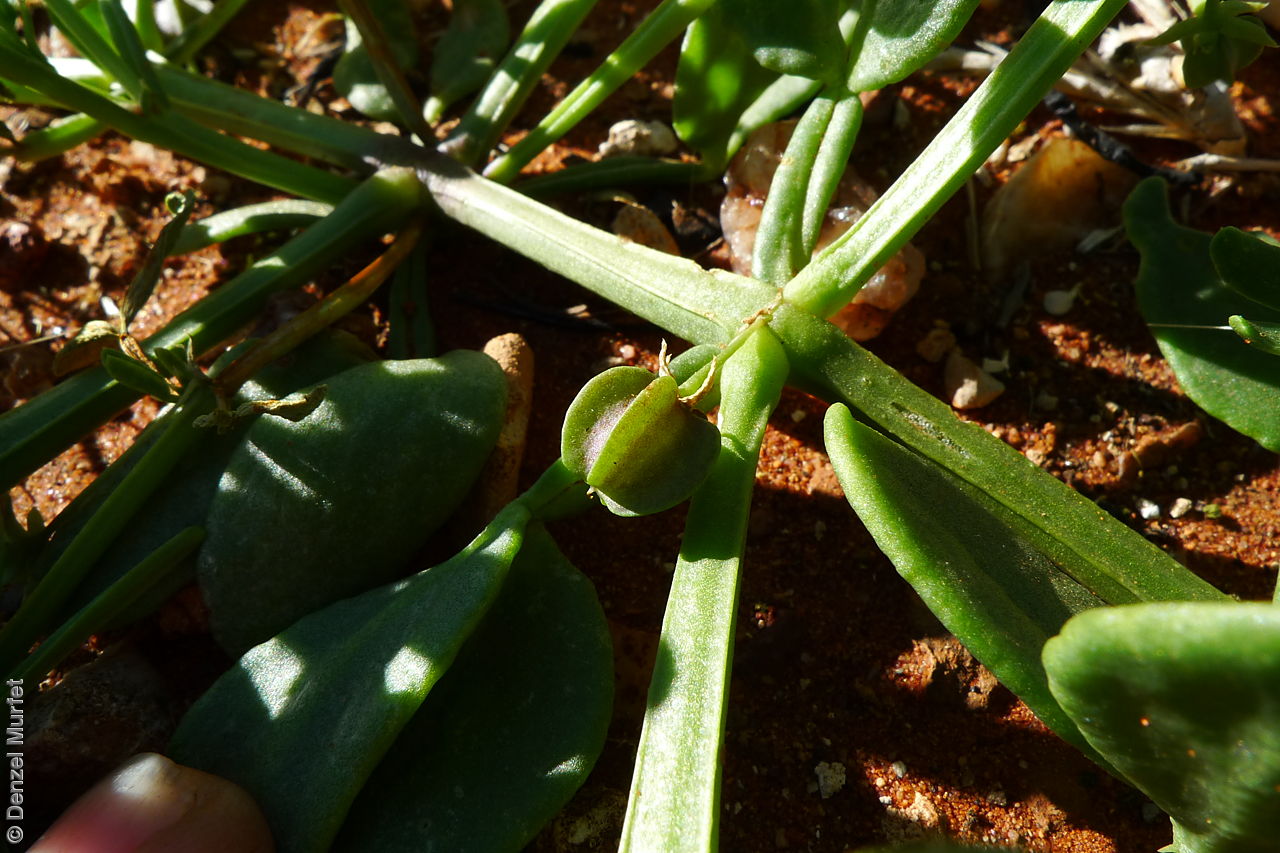
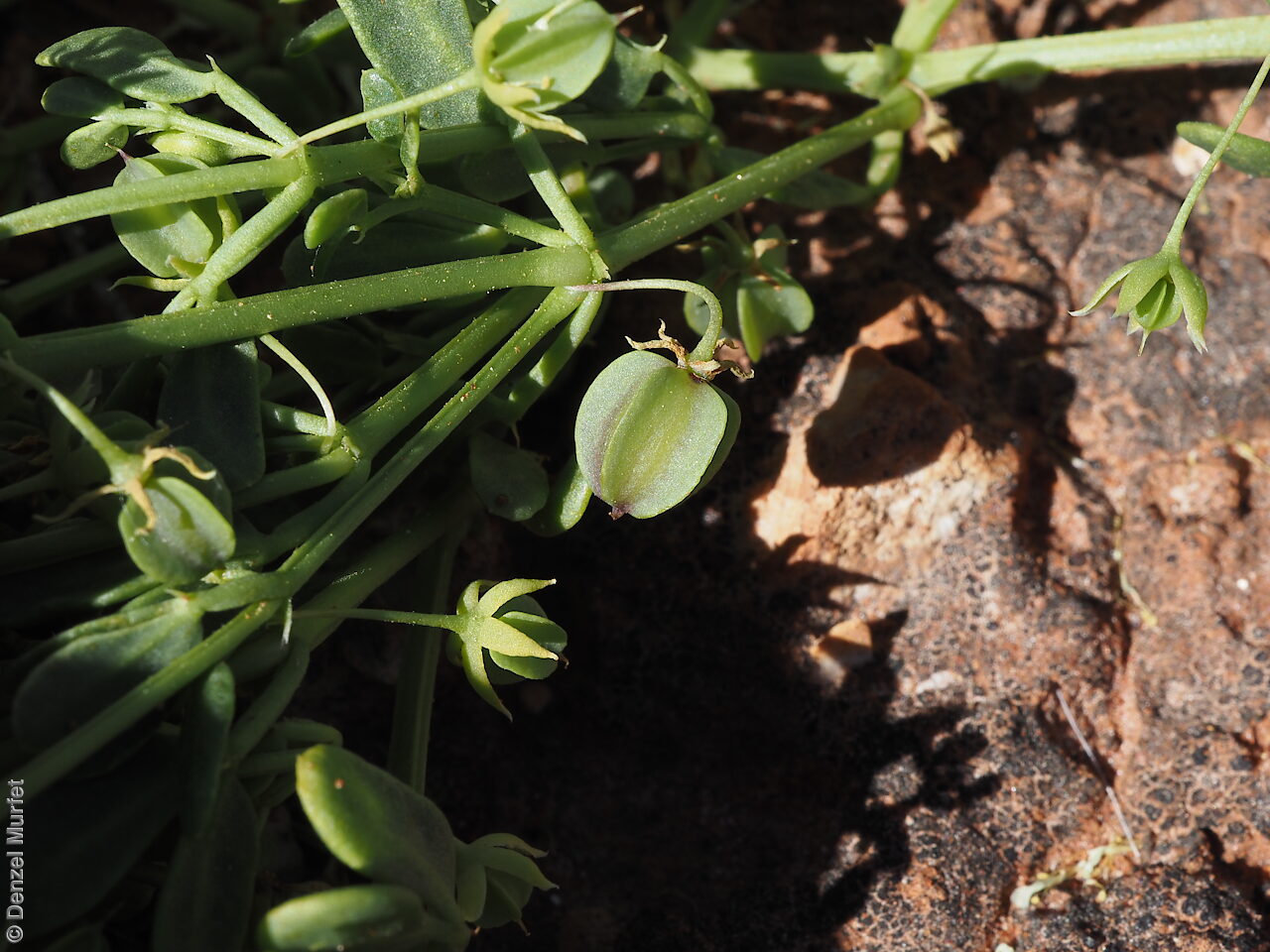
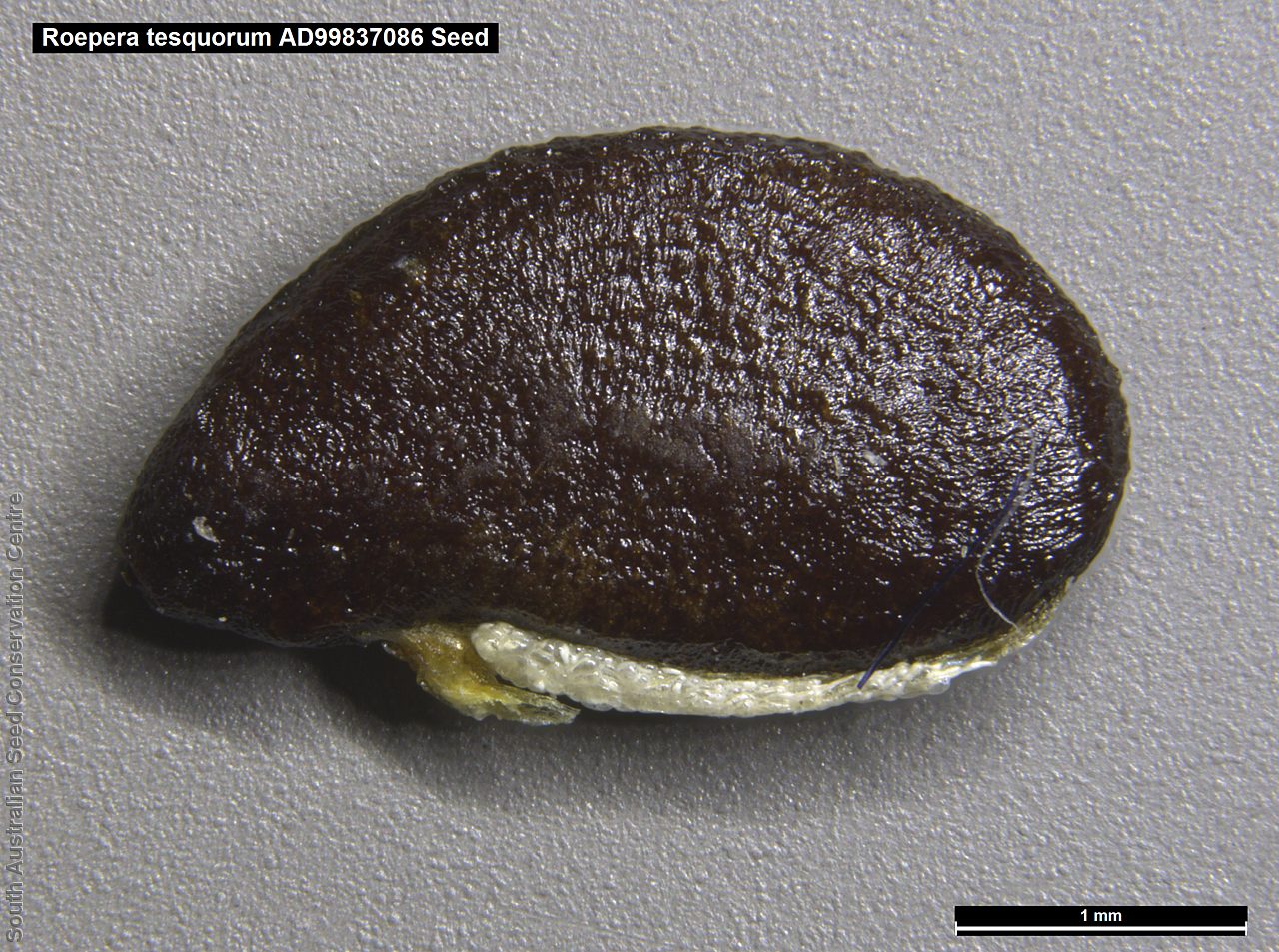
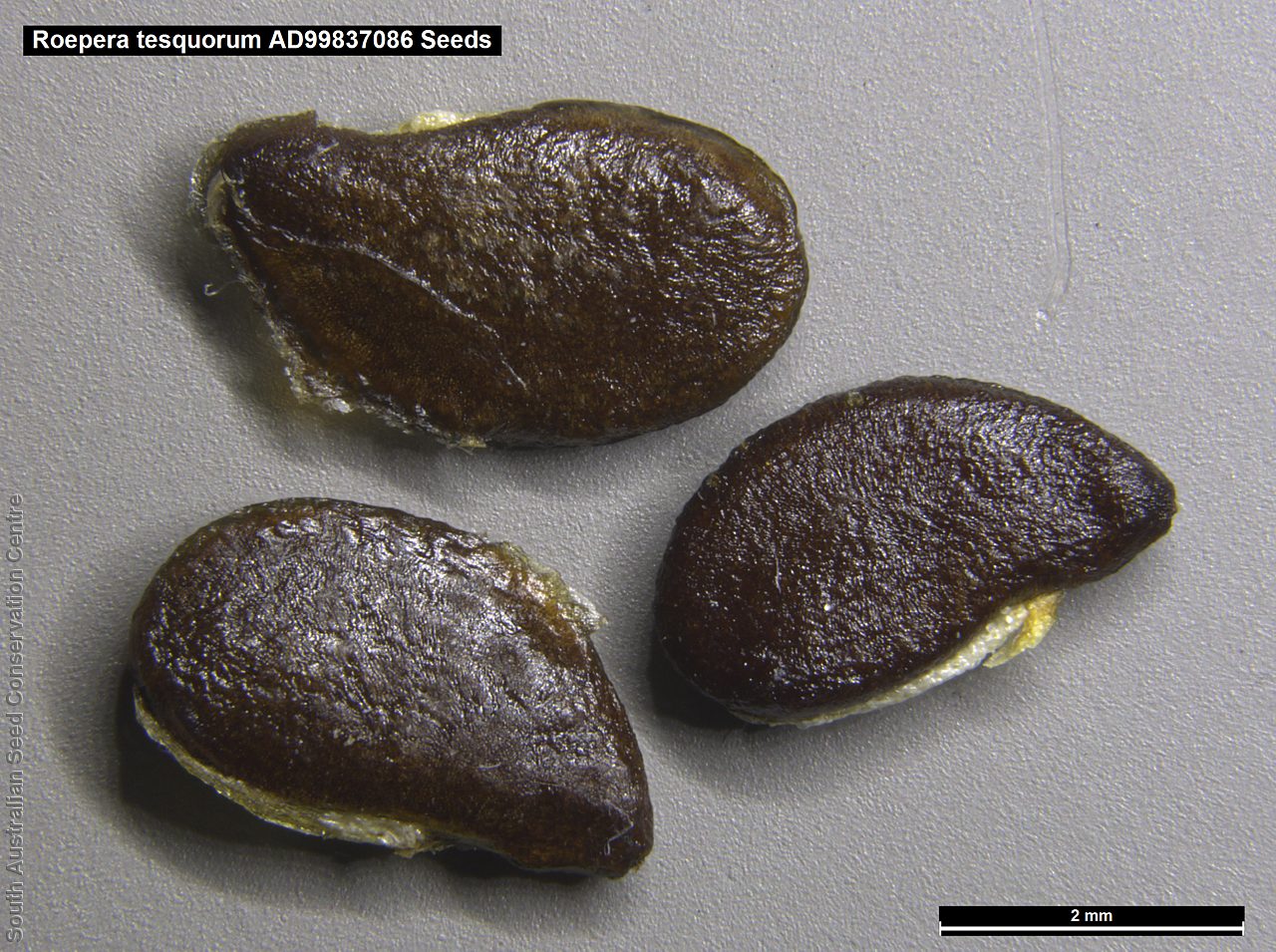


Prior names
Zygophyllum tesquorum
Common names
White-flower Twinleaf
Etymology
Roepera (formally Zygophyllum which is from the Greek 'zygon' meaning pair and 'phyllon' meaning leaf; referring to the pair of leaflets making up each leaf) is named after Johannes August Christian Roeper (1801 -1885), a German botanist and physician. Tesquorum means of waste ground or desert; referring to its habitat in the centre of Australia.
Distribution and status
Found in the far north-western part of South Australia, growing in disturbed areas on calcareous soils. Also found in Western Australia and the Northern Territory. Native. Rare in South Australia. Common in the other states.
Herbarium regions: North Western, Lake Eyre
AVH map: SA distribution map (external link)
Plant description
Erect to spreading herb to 30 cm high with glabrous ridged stems. Leaves opposite, succulent, green, oblong to ellpotic, Y-shaped, to 18 mm long and 8 mm wide, glabrous. Inflorescence solitary at each node with white flowers. The species is very similar in habit to R. kochii and R. iodocarpa but can be distinguished from them by its narrower and entire leaflets, smaller capsule and white flowers rather than yellow drying white. Flowering between July and September. Fruits are ovoid capsule to 11 mm long, strongly 5-angled (but not winged), on a long stalk. Seeds are dark brown, ovoid to 4 mm long and 2 mm wide, with smooth or slightly wrinkled surface. Seed embryo type is spatulate fully developed.
Seed collection and propagation
Collect seeds between September and November. Collect semi-dried and dried capsules by running your hands through the stems of the plant. Mature fruits will come off easily and will have a hard and dark seed inside each segment. Place the capsules in a tray and leave to dry for 1 to 2 weeks, depending on how green the fruit is. Then rub the dried capsules to dislodge the seeds. Use a sieve to remove the unwanted material. Store the seeds with a desiccant such as dried silica beads or dry rice, in an air tight container in a cool and dry place. Seed viability is usually high.